Emma Krenzer
Year of birth: 1997.
Where do you live: Omaha, Nebraska.
Your education: I graduated from Nebraska Wesleyan with my bachelor’s in 2019, where I majored in art and minored in psychology. I am currently obtaining another bachelor’s in education so that I can become an elementary school teacher.
Describe your art in three words: Vulnerable, introspective, layered.
Your discipline: Mixed media.
Instagram
Your work is deeply autobiographical and touches on themes of grief and memory. How do you navigate the vulnerability of sharing such personal experiences through your art?
Over the last few years, I’ve experienced a tremendous amount of loss that has deeply and permanently reshaped many parts of my identity, particularly my identity as an artist. Art has always been a passion of mine and an important part of who I am, but before grief entered my life, creating was more of a joyful pastime—something I did simply because I loved it. That changed when I began navigating loss and grief. Creating stopped being just something I enjoyed and wanted to do—it became something I needed. A way to survive. There are many days where the weight of grief is so heavy, and the only thing that makes it feel lighter is being able to pour those emotions into my work. It has given me an outlet for my pain, a place for it to go so that I don’t always have to carry it in me. Being able to take these painful experiences from my life and transform them into something tangible has truly been my saving grace.
Ironically, even though I’ve been creating the most work I ever have during this period of my life, there was a long stretch of time in the beginning where I stopped sharing my work altogether. Sharing my work was something that I really enjoyed doing in the past, but this work was different. It was so deeply personal, and sharing it just felt too vulnerable to me. Not only was it the embodiment of my deepest pain, but I also looked at a lot of the work as tributes to people that I had lost, which made it all the more sacred to me. This was work that I was truly making just for myself, and I didn’t want to invite other people’s perceptions and judgements into it. This period of keeping my work private lasted for a few years. There would be moments where I thought maybe I was ready, but I would end up overthinking and decide against it.
So I gave myself time. Time to heal, time to let my work be just for myself, time to navigate the grief and my creative process in the way that I needed to. I knew that the day I felt ready to share again would come, and it did.
One day I just knew that I was ready and that it was time. I shared a piece that I had created about my grief, one that was extremely special to me. And while it did feel vulnerable, it also felt extremely liberating to be able to share that part of myself and to be able to use my work as a channel to communicate these painful experiences that I had been through. For my pain to be seen. I received such an outpour of love, support, and validation by sharing that piece and allowing my pain to be seen by others. The responses that I received were just as healing as the process of making the work itself.
Creating and sharing vulnerable work can feel scary, because it demands honestly with yourself and others. But that’s also why I love it, and why I think it’s so important. It allows me to connect with people on a level I never could otherwise, and to give form to emotions that are often too heavy to articulate. Now, I truly love sharing my work again. It has become an important part of my healing process by helping me feel seen in my grief, and I hope it creates space for others to feel seen in theirs too.
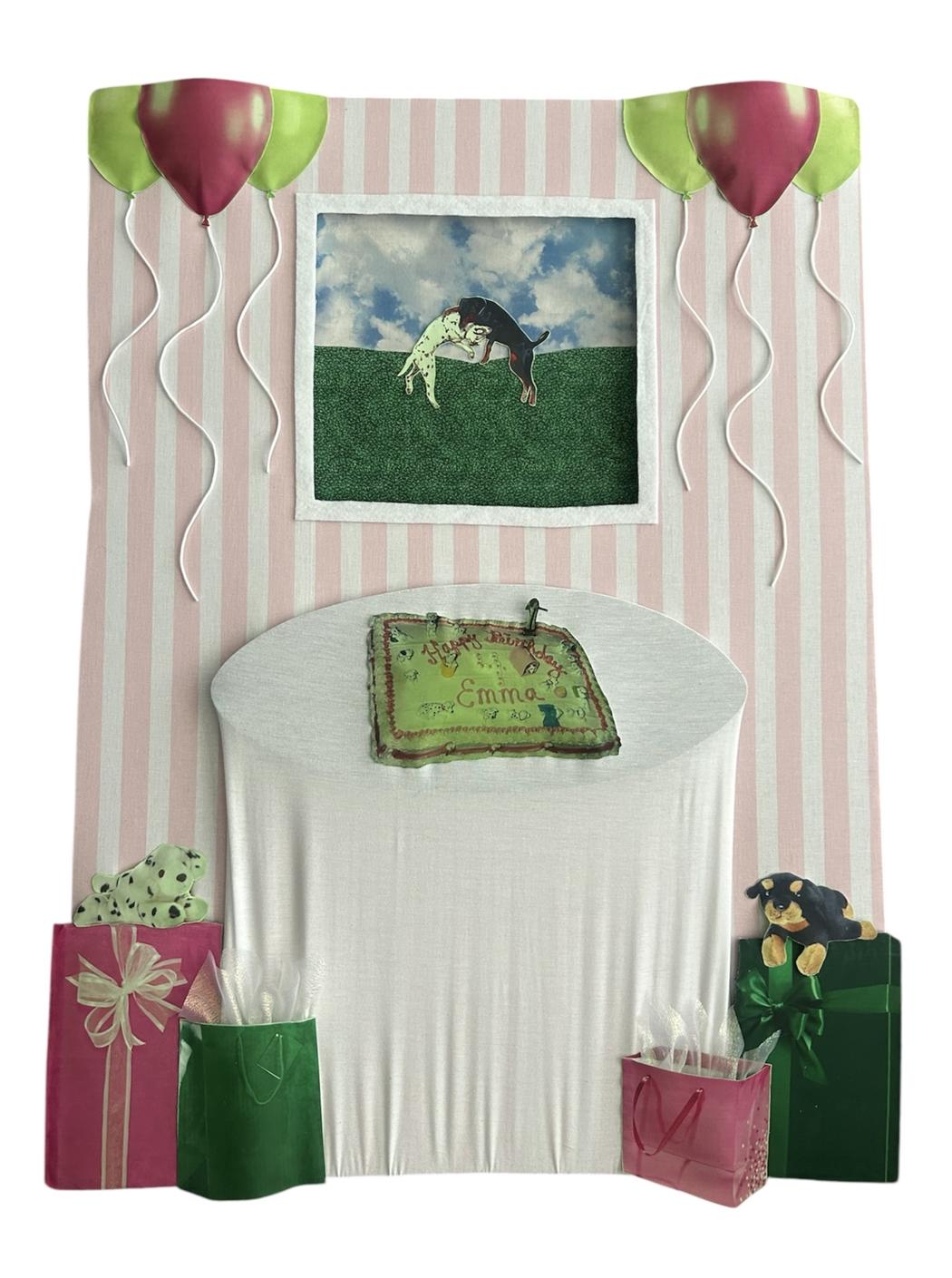 Emma Krenzer | I Grew Older In Dog Years | 2025
Emma Krenzer | I Grew Older In Dog Years | 2025
Several of your pieces incorporate domestic or childhood motifs—like birthday cakes, dollhouse settings, and nursery decorations. What role does nostalgia play in your exploration of grief?
For me, grief and nostalgia are deeply intertwined, and that connection has become a defining thread throughout my work. Grief evokes a complex range of emotions, but one of the most persistent for me has been a deep, aching longing for the past—for what once was.
Nostalgia is something that everyone experiences to some degree throughout their life, and I certainly did before I experienced loss. But grief has intensified those feelings to the point where they are sometimes almost physically painful. Because not only am I longing for places, things, and moments that no longer exist, but people too. I’m homesick for a home that I can never return to, a life that will never exist again.
I find myself constantly reflecting on periods of my life that at the time didn’t feel particularly special, but now, in hindsight, I would give anything to return to. I look through old photos, especially from my childhood, and wish that I could live in them. I long for the simplicity, joy, and innocence of that time in my life—a time before I knew the kind of pain that I carry now. A time when my dad was still in our family photos.
Much of the inspiration behind my work comes from these photos and memories of my childhood and the complicated emotions they evoke in relation to grief. Looking through old photos brings me feelings of comfort and happiness, but also of regret and deep sadness. There is a profound weight in knowing what was to come and wishing I had cherished those moments more. Wishing I had been more present, more aware of how fleeting that version of life truly was. I want those happy memories to remain untouched by grief, but it often feels as if grief has bled backward—reaching even into the past, coloring moments that once felt pure.
This emotional conflict is something that I try to convey in my work. I use nostalgic, domestic, and childlike imagery to evoke feelings of comfort and familiarity, and I juxtapose them with unsettling or unexpected elements. The work becomes a visual representation of both warmth and unease, a reminder of how quickly things can change and that life as we know it is extremely fragile. A collapse of the bridge between what was and what is.
Incorporating nostalgic imagery in my work is also a way to address my complicated, sometimes frustrating relationship with memory. When someone passes away, people will often say, “You’ll always have your memories,” in an attempt to offer comfort. But for me, that phrase has always felt more haunting than comforting—because I don’t have a very good memory. I find myself desperately searching my memories for pieces of the people that I’ve lost, and worry that the fragments I do have will fade, and I will be left with nothing.
Creating art allows me to preserve these fleeting memories—turning them into something physical, something permanent. It is my desperate attempt to capture and hold onto the moments that time threatens to erase. Through my work, I try to give form to grief, nostalgia, and memory—inviting others into the emotional complexities that live in between.
In “A Web of My Past Selves”, we see figures entangled in a web—what does this image represent to you in the context of loss and identity?
The figures entangled in the web are all photographs of me at different stages of my life—each one representing a different version of myself. With this piece, I wanted to explore the idea that we are constantly evolving, continuously becoming new iterations of who we are, while also carrying the weight and memory of who we once were. In that sense, we’re not just who we are now—we’re a culmination of every version of ourselves that came before.
The loss I’ve experienced over the last few years hasn’t just been the loss of others, but of myself as well. Grief has profoundly changed me. In many ways, I’ve mourned—and continue to mourn—the person, or rather the people, I used to be before loss reshaped me. At the same time, I’m extremely proud of the person I’ve become through that grief. She exists because of those experiences, and she wouldn’t exist without them.
What I’ve come to realize is that those past versions of myself aren’t truly gone. They still live within me, but they’ve changed, just as I have. They’ve been altered by time, by memory, by transformation. That’s why I chose to depict them caught in a web—a web of my own making. They aren’t lost; instead, they’re woven into the fabric of my life. Permanently entangled, not in a way that restricts, but in a way that acknowledges their ongoing presence and influence.
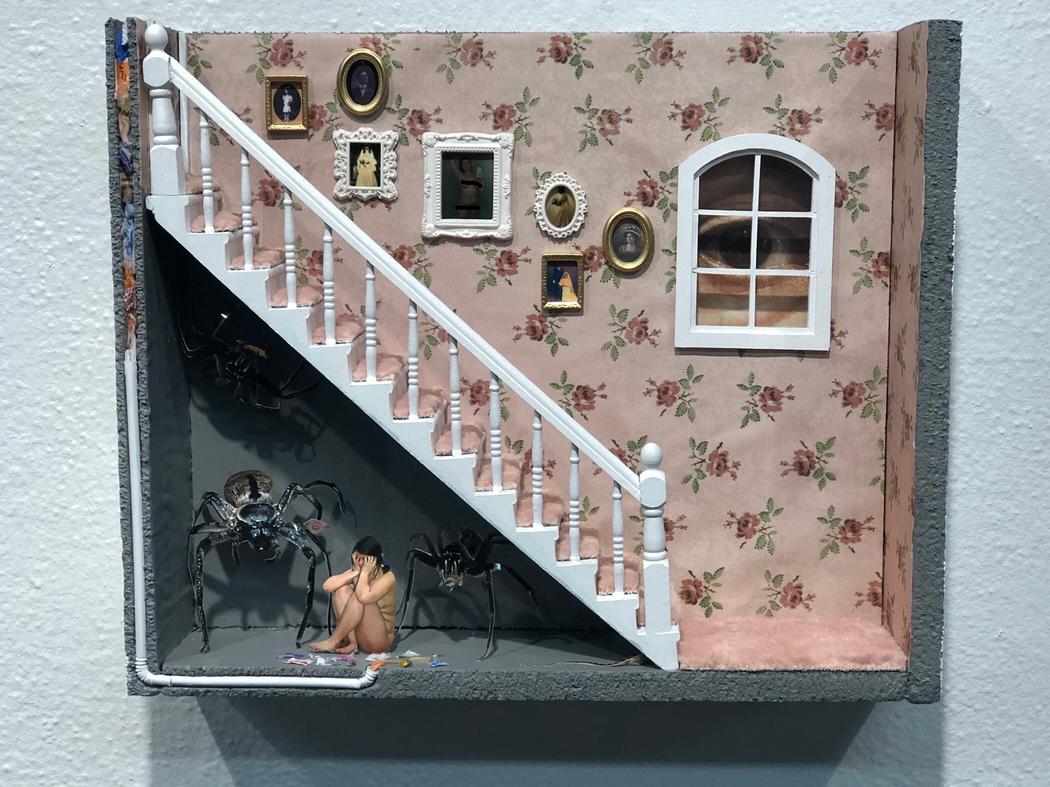 Emma Krenzer | Everything And Nothing Always Haunts Me | 2021
Emma Krenzer | Everything And Nothing Always Haunts Me | 2021
What is your process like when starting a new piece? Do the visuals come first, or the emotional impulse?
For me, it’s really a combination of both. My work is autobiographical, meaning it is derived from personal experiences and the emotions tied to them. Creating art is how I process those emotions; it’s a way of working through what I’ve lived. Emotion or experience is always the starting point of my process, but interestingly, the visuals tend to come to me before I even begin creating as well.
I’m a very visually oriented thinker. I think almost entirely in images. Because of that, my emotions and experiences naturally take on visual forms in my mind. And often, those visuals come together in a way that becomes an idea for an art piece.
When I get an idea for new work, it usually appears to me as a fully formed visual in my head. I visualize the final product first. From there, I start thinking about what medium or materials would best bring that image to life. I essentially build the entire piece mentally, step by step, before I begin physically creating it. In some ways, I really appreciate this approach because I have a clear vision and direction. But at the same time, it can be frustrating if the final piece doesn’t match what I had visualized initially. That disconnect can be discouraging, even though it’s part of the process.
How does your background in psychology influence the way you construct your visual narratives?
A recurring theme throughout my work over time has been the idea of revealing what lies beneath the surface—both materially and conceptually. The exploration of this idea began during my undergrad, when I was pursuing both art and psychology. The two disciplines deeply informed one another and shaped the direction of my practice.
At the time, I found myself reflecting a lot on the concepts of suppression and shame. These were feelings I was personally struggling with and that I knew many others experienced, yet were rarely discussed openly. I wanted to explore these themes in a way that was metaphorical and emotionally resonant, using familiar domestic imagery to connect the tangible, physical world to the intangible inner-workings of the mind.
In my earlier work, I frequently used imagery like bathrooms and plumbing as metaphors for hidden emotional processes—what’s unseen, repressed, or on the verge of eruption. I also incorporated childlike symbols, such as dollhouses, as a way to investigate psychological themes tied to memory, identity, and vulnerability.
Ultimately, my goal is to construct visual narratives that invite viewers to reflect on their own psychological landscapes in a way that feels both visually compelling and conceptually rich. Psychology has been a crucial influence on my creative process, and without it, I’m not sure I would have been drawn to explore these inner narratives in such a layered and symbolic way.
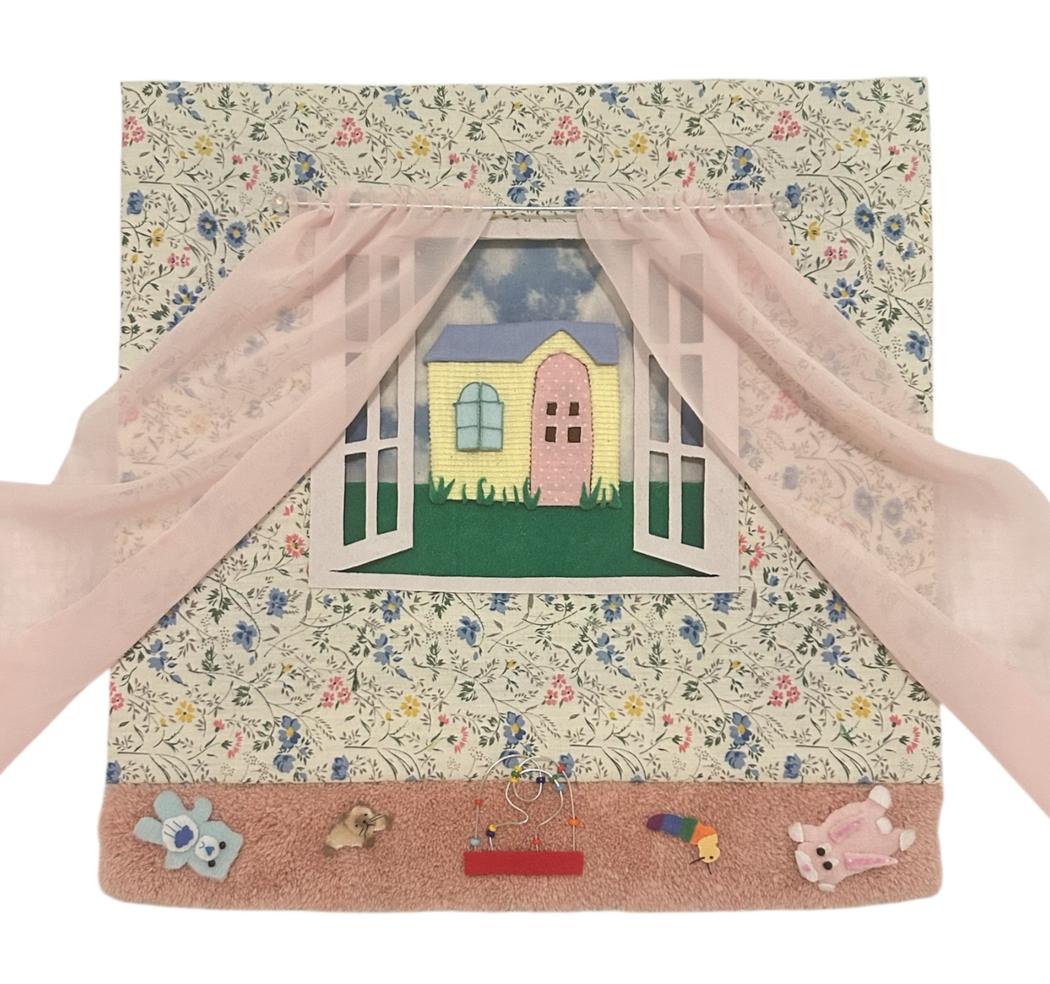 Emma Krenzer | A Window To The Past | 2024
Emma Krenzer | A Window To The Past | 2024
There is a strong tactile quality in work—fabric, yarn, toys, wallpaper textures. Why is materiality so central to your storytelling?
Being able to explore different materials and the way that they can shape and support the message of a piece is one of my favorite parts about being an artist, and why I’ve found such a love for creating mixed media work. I think that materials, especially those that may not be considered traditionally associated with fine art, can be such a powerful tools for storytelling and creating connection.
It has also been interesting to see how much my use of materials has changed and evolved as I have changed both as an artist and a person. In my earlier work, I used a lot of harder, more industrial materials like wood, pipes, and drywall, building rough structures that I would then cover with floral wallpaper. For me, wallpaper functioned not only as an aesthetic visual, but as a conceptual device, symbolizing concealment and touching on ideas like femininity and domestic spaces, and what lies beneath those surfaces.
Over the past few years, I’ve shifted away from these rigid materials and have began creating work in softer, textile materials. Part of this transition was due to the fact that I no longer had access to all of space and materials that my university provided me with during undergrad. But the shift also mirrored deeper emotional changes, and became really salient as I started experiencing the losses I have over the last few years. Everything just felt so heavy, and work I was making at the time carried a lot of that emotional weight.
Textiles, which we often associate with warmth, comfort, and care, became a natural material to turn to. I think I was drawn to them because they embodied exactly what I was so desperately yearning for: a sense of safety, home, and softness. I also wanted the materiality of my work to create those feelings for others. I think the universal nature of textiles has the power to foster a sense of emotional connection among people, evoking memories and shared feelings of comfort and home.
You mention the idea of “home” as a recurring theme. What does “home” mean to you now?
As I’ve grown older, the idea of “home” has become increasingly complex, and that complexity is something I’ve been exploring through my art. I’ve come to realize that, for me, home is more of a feeling than an actual place. And that feeling is often bittersweet.
Throughout my life, I’ve had many different versions of what “home” means. I’ve lived in many different places with many different people. Some of the places I once called home are places I can no longer return to, and that, in itself, is a strange and painful feeling. But even more painful is the reality that some of the people who I’ve shared these homes with are no longer on this Earth. It has given “homesick” a whole new meaning to me. It’s not just missing a place, it’s missing a moment in time, a version of life that can’t be recreated.
That’s why my relationship with the idea of home feels so complicated. Because even when I’m in the place I currently call my home, I am homesick. Homesick for all the past homes I’ve had, and for the people who made them feel like home. It’s incredibly hard to sit with the knowledge that some of those versions of home are gone forever, especially because the people that made them home are no longer here. There is a quiet and profound grief in realizing: I can’t go home.
But this understanding has also made me more present in the home I have now. It’s made me cherish this version of home, knowing how fragile and fleeting it can be. Because this, too, will change. One day, I’ll look back on where I am now with the same kind of longing I feel for all the homes that came before.
I’ve learned that home can be a lot of things, even things that don’t even exist anymore. It can live in memories, in photos, in feelings that are hard to name. And maybe I will always be a little homesick, and that’s okay.
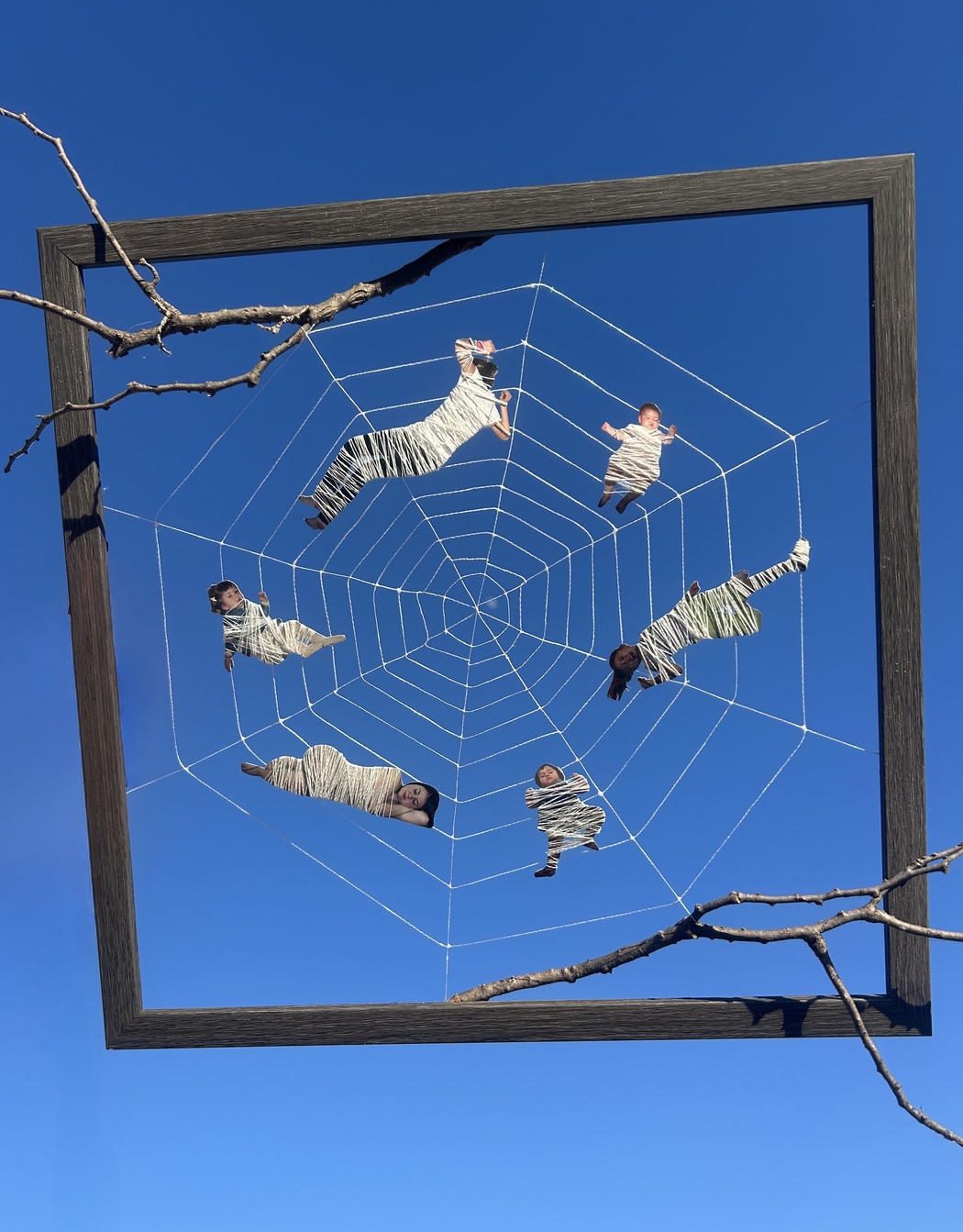
Emma Krenzer | A Web Of My Past Selves | 2025

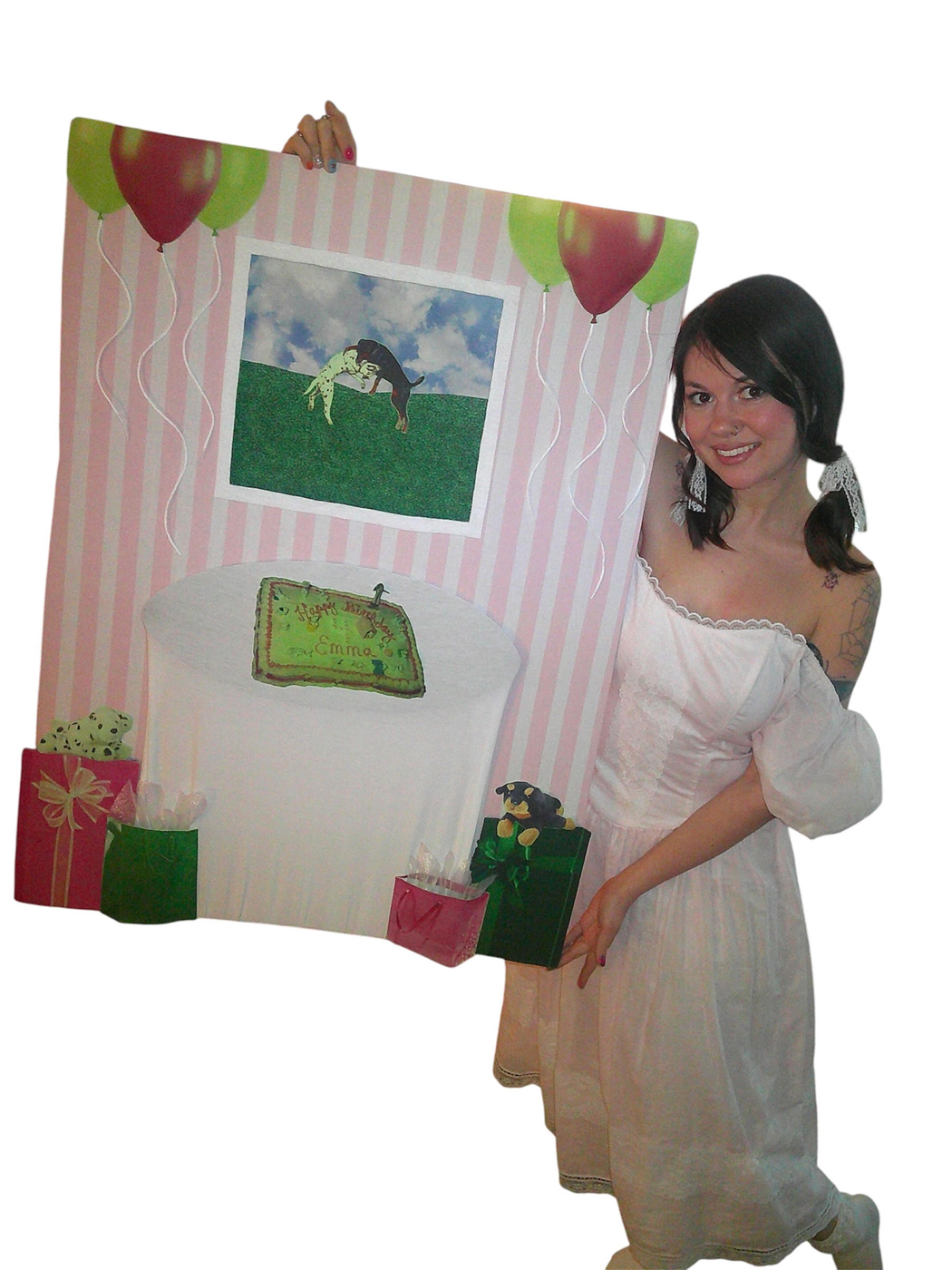
Leave a Reply